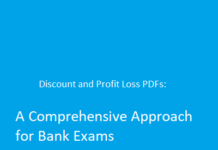
When it comes to investing, most individuals prefer to park their money into high-yielding investment options with the goal of maximizing profits in a short period of time. However, such investment options tend to come with a high-risk quotient and may not be suitable for investors with a low-risk appetite. This is why it is crucial to park money into investment options that generate returns without exposing one’s investment portfolio to market risks to ensure their capital and saving does not erode with time.
That said let us read along to check the best investment plans for investors with low-risk appetite.
Best Low-risk Investment Options
While there are several investment options available in the market, individuals with a low-risk appetite should focus on instruments that help generate a steady stream of income without exposing them to market risks.
Here are a few investment plan options that are deemed suitable for individuals with low risk:
- Fixed Deposits
Fixed deposits are regarded as the safest and most lucrative alternatives for long-term investment, making them the most popular kind of investing. While there may be certain restrictions that may vary among NBFCs and banks, fixed deposits are widely considered to be a secure investment option that pays a substantial amount of money upon maturity.
Notably, fixed deposits offer accountholders an appealing rate of interest, but the same varies between regular and senior citizens. Above all, fixed deposits come with a maturity period ranging from 7 days to 10 years. This offers investors the flexibility to choose a time horizon that matches their goals and requirements.
- National Savings Certificate
These are Indian government-backed savings bonds that offer tax benefits under Section 80C of the Income Tax Act of 1961, making it one of the safer investment options. The Indian Postal Service distributes National Savings Certificates, which are available at every post office in India. A minimum of Rs.100 investment is required to start investing in National Savings Scheme. Such a scheme offers two maturity periods to select from – 5 years and 10 years, which one can choose as per their financial plans. NSC also accompanies tax benefits of up to Rs. 1.5 lakhs, which one can avail of under Section 80C.
- Public Provident Fund or PPF
The Public Provident Fund is a popular long-term investment plan that provides the perks of savings and tax returns. With the help of this investment option, individuals can easily mobilize small amount of funds to build a robust corpus with ease. However, to maintain a Public Provident Fund, individuals must pay at least Rs. 500 yearly, and a maximum limit of Rs. 1.5 lakh. One should also note that a PPF account comes with a lock-in period, and withdrawal of the entire sum of money is allowed only after the completion of the maturity period.
- Mutual Funds
Individuals who are interested in investing in stocks and securities such as debt and bonds with an ideal balance between risk and return choose to invest in mutual funds. Investing in top-performing mutual funds offers stable capital appreciation and returns when compared to other options accessible in the market. The returns provided by mutual funds are entirely dependent on their market performance. Even though mutual funds have a high-risk quotient, they can offer higher returns than other investment choices.
- Equity Mutual Fund
These are market-linked securities in which the majority of the money invested is made in equities and equity-related securities with the goal of maximizing returns on investment over the long term. Notably, the risk in equities funds is higher, but the returns are also higher when compared to other mutual fund options. These mutual types of investments are best suited for those with a high-risk tolerance level and afford to stomach a dent in invested capital. However, the high returns help to make up for the lost capital over long term.
- Debt mutual funds
Debt funds are regarded as an appealing option for investors seeking a consistent return on their investments over an extended period of time. Typically, these funds invest primarily in debt securities such as corporate bonds, government securities, commercial papers, treasury bills, corporate bonds, and other money market instruments. These funds are known for facilitating capital growth and generating interest income while exposing investor’s portfolio to mild volatility.
- National Pension Scheme
This is among the most preferred retirement plan for long-term investing, and any individual between the ages of 18 and 60 can put money into it. The minimum investment in NPS is Rs. 60,000, and there is no maximum limit. Notably, the returns from NPS is closely dependent on the percentage of stock and debt percentage in the scheme. Additionally, National Pension Scheme is also eligible for tax deductions of maximum Rs. 50,000 under Section 80CCD (IB) of ITA, in addition to the Rs. 1.5 lakh under Section 80C. Since some portion of the invested capital is parked into equities, the returns are better than most traditional investment options. However, the same reason also exposes the investor to some extent of market volatility. Notably, the National Pension Scheme account number remains the same even if there has been a change in employment.
- Gold investment
When it comes to short-term investments, gold is counted among the most lucrative options in India. This is because gold is highly liquid and its demand is always high, which helps investors to tide over the banking crisis or rising inflation. Another perk of investing in gold is that financial market volatility has no effect on its value. Take for instance, the demand for gold has been surging, leading to a 23.5% return on investment in the last 5 years. Individuals can invest in different forms of gold like bullion, coins, bars, and digital gold, based on their preferences.
Besides these, investors can also invest in insurance plans to build a corpus for their financial security. They can park money into Unit Linked Insurance Plan and find out the returns using a ULIP plan calculator.
However, one should ensure to achieve a perfect blend of risk and returns in their investment portfolio to generate substantial returns. Above all, it is important to pick low-risk investment plans that would help to achieve financial goals.

















